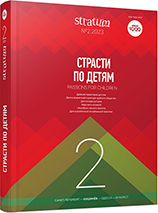Состав сплава металлических предметов из раскопок поселения позднего бронзового века Багай 1 в Северо-Западном Крыму
The Composition of the Alloy of Metal Objects from the Excavations of the Late Bronze Age Settlement of Bagai 1 in the North-Western Crimea
Author(s): Andrei A. Goroshnikov, Zoya V. Goroshnikova, Tatiana Nikolaevna Smekalova, Anna V. AntipenkoSubject(s): History, Archaeology, Ancient World
Published by: Издательский дом Stratum, Университет «Высшая антропологическая школа»
Keywords: Late Bronze Age; Bagai 1 settlement; metal objects; X-ray fluorescence analysis;
Summary/Abstract: The Late Bronze Age settlement Bagai 1 is located on the left bank of the Bagai ravine, which flows into one of the largest lakes in the Crimea, Sasyk-Sivash, near the city of Yevpatoria. In the northern part of the settlement, excavations were carried out by the expedition of the Institute of Archeology of the Russian Academy of Sciences in connection with the construction of the Yevpatoria branch of the Tavrida highway. The article examines the results of X-ray fluorescence analysis of the alloy composition of metal finds from the excavations. It turned out that all studied items of the Late Bronze Age were made of tin bronze, in which the corresponding ligature is from 2 to 20 %. The only exception is a miniature chisel, in which there is no tin, and in addition to copper, more than 8 % of iron was found. Other prescription components (arsenic, antimony, lead) are also found in several items, but in very small concentrations (up to 2 %). The use of tin bronze in items of the Late Bronze Age is a distinctive feature of the Central European tradition and allows us to attribute the alloys of the items studied to the Carpatho-Transylvanian metallurgical province.
Journal: Stratum plus. Археология и культурная антропология
- Issue Year: 2023
- Issue No: 2
- Page Range: 319-336
- Page Count: 18
- Language: Russian
- Content File-PDF

